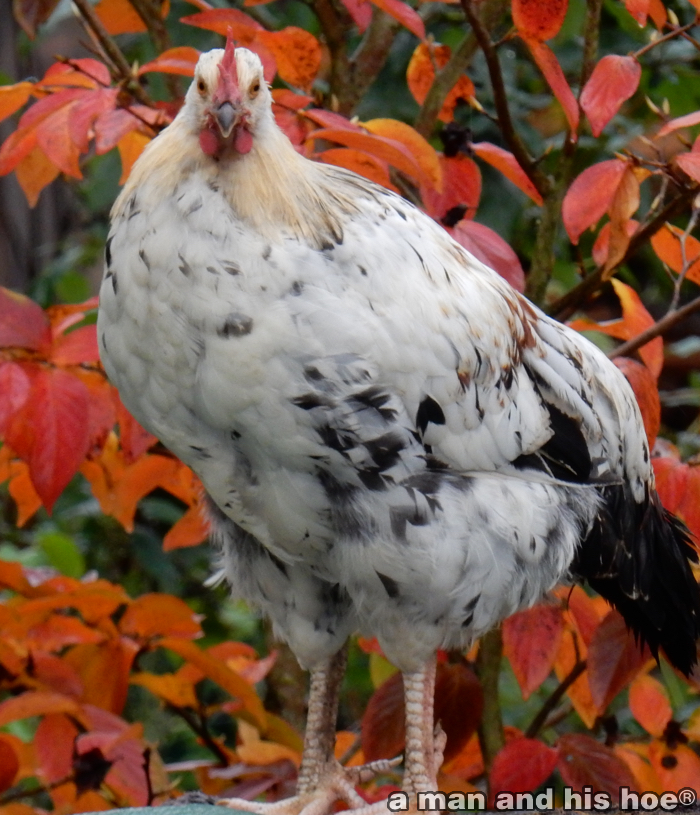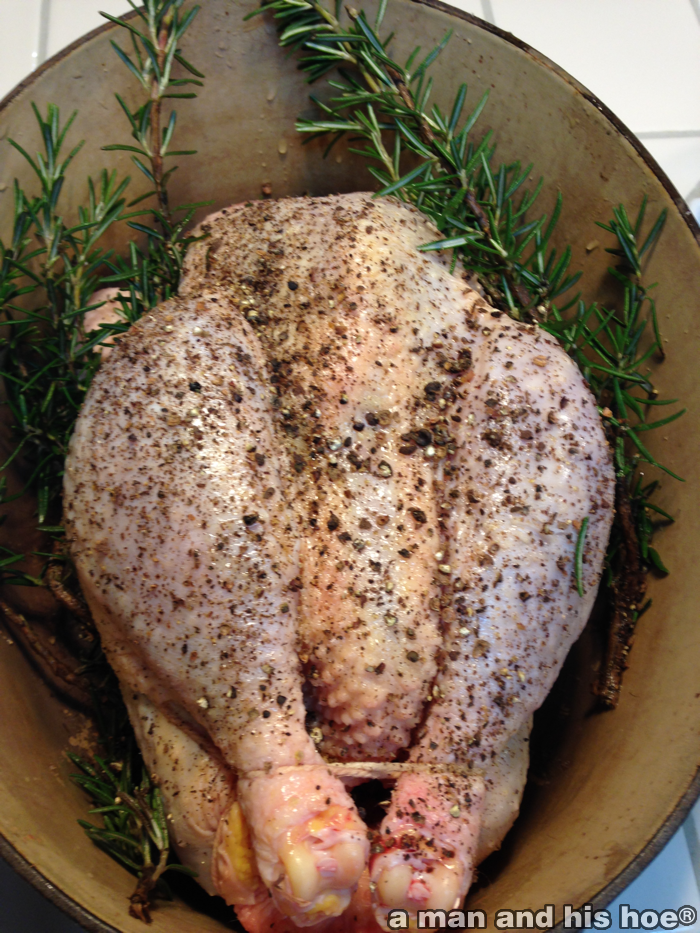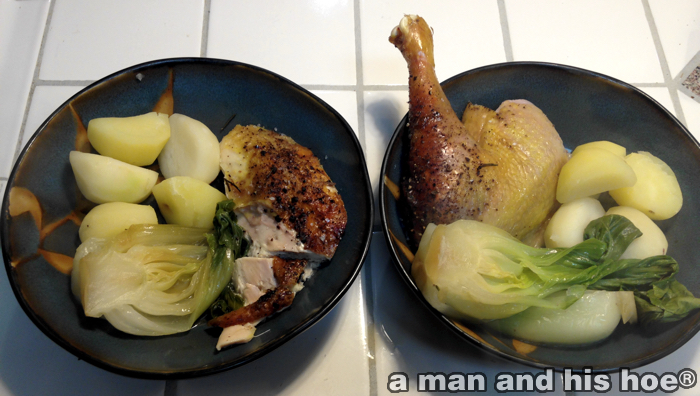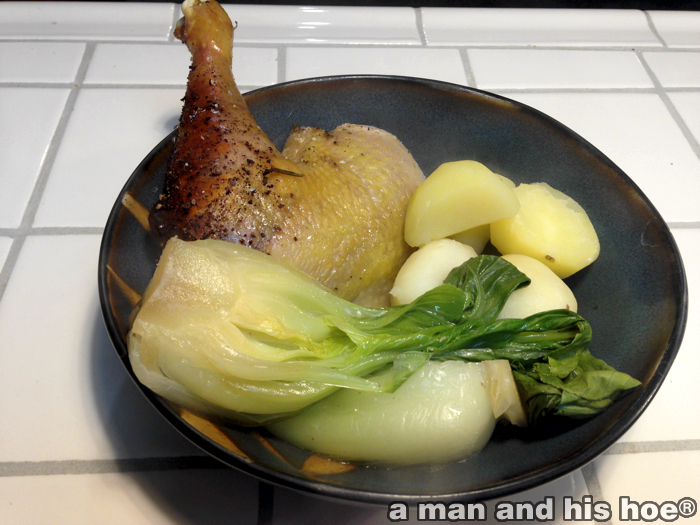Your cart is currently empty!
Slow Food – Dinner Eight Months in the Making

It takes a long time to make a sumptuous winter dinner. After growing slowly for eight months, the end has come for this rooster. Yes, it’s sad, but he did have a wonderful childhood, raised by a mother who cared for him. He spent a summer running around with his siblings, dashing through flower beds, chasing each other around the pond, playing hide and seek in the brush. And this fall, when he matured, he had plenty of romance.
But, I can only keep a select number of roosters, and this one did not make the cut. He was too aggressive with the hens and other roosters. The roosters that get to stay must have better manners and treat the hens with more care.

So into a covered pot he goes, salted, and dusted with crushed pepper and allspice, and laid to rest on a bed of rosemary.


After four hours in a 200ºF oven, covered, and 15 minutes uncovered under the broiler, he’s nearly ready for dinner. All he needs to do now, is rest ten or twenty minutes before carving.

And finally, a simple feast, great for a December night.



Comments
2 responses to “Slow Food – Dinner Eight Months in the Making”
-
what a very lovely plump rooster! What breed is he? I’m on the prowl for a good meaty alternative to the cornish cross (which I love and have no problems raising, but had to open my eyes when I admitted I have no idea how the parent stock is raised and what they are put through with the insemination process.)
-
That rooster was a cross between a Dorking and most likely a White Bresse. I had a Dorking rooster at one point, but didn’t keep it or it’s offspring, as they were very aggressive in how they treated the other roosters and the hens. Some roosters are much more gentle with the hens than others. It’s easy to tell which chickens had Dorking in them, as Dorking chickens have an extra toe. If you look at the feet of the rooster in the picture, you can see the extra toe pointing backwards on its feet.
Leave a Reply
You must be logged in to post a comment.